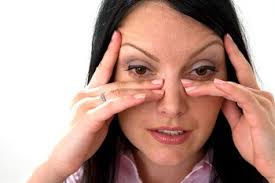
It’s the depth of winter so colds, sneezing and coughing seem to be common.
But when you go to the hairdressers, a trainee steps in to learn a particular flip or curl and then returns the scissors and comb to the regular hairdresser.
Next day, you develop a runny nose, congestion, nasal itching, sneezing, postnasal drip and, for some, watery eyes.
You wonder what happened; nobody at home or work is sick. Where did my nose woes come from?
You’ve likely got a case of rhinitis which includes all the above symptoms. It may sound minor, but in the United States, rhinitis accounts for about three percent of all doctor visits, with costs running an estimated $10 billion, according to Medical Life Science News.
Rhinitis can also aggravate other chronic conditions like sinusitis and asthma.
Now, a new study from Denmark – printed in January’s issue of the International Forum of Allergy & Rhinology — may shed some light on the development and spread of rhinitis. And that brings us back to hair dressing salons and perhaps barber shops.
Probably because nobody had studied airborne exposure to chemical irritants and the risk of occupational asthma and rhinitis among hairdressers, researchers studied the condition in Danish hairdressing apprentices who spend four years learning the trade.
Read about a special airway that revolutionizes nasal and sinus surgery.)
Medical questionnaires were filled out by 1,128 hairdressing apprentices and 2,701 other young people of similar age, gender, locations and backgrounds who did not work around or near hairdressing salons.
The questionnaire asked if the person smoked, nine questions about rhinitis, asthma and their physical reactions (coughing, wheezing, chest tightness, shortness of breath, runny nose, chest tightness, itchy or watering eyes, etc.) to:
- Hair bleaching
- “ coloring
- “ spray
- Permanent wave solutions
Results? 1904 people completed the questionnaire.
Hairdressing students showed a 58.1 percent prevalence of rhinitis symptoms with the other group at a 46.6 percent rate. Prevalence of asthma was the same for both groups, but the apprentices smoked more at a 28.4 percent versus a 17.2 rate.
Hairdressers showed a higher risk of rhinitis symptoms due to exposure to hairdressing materials, but the rate went up as the last of four years approached.
The study authors proposed that the 10 Danish hairdressing schools focus on preventing rhinitis by reducing chemical exposure and giving students better schooling on the many ill aspects of smoking.

